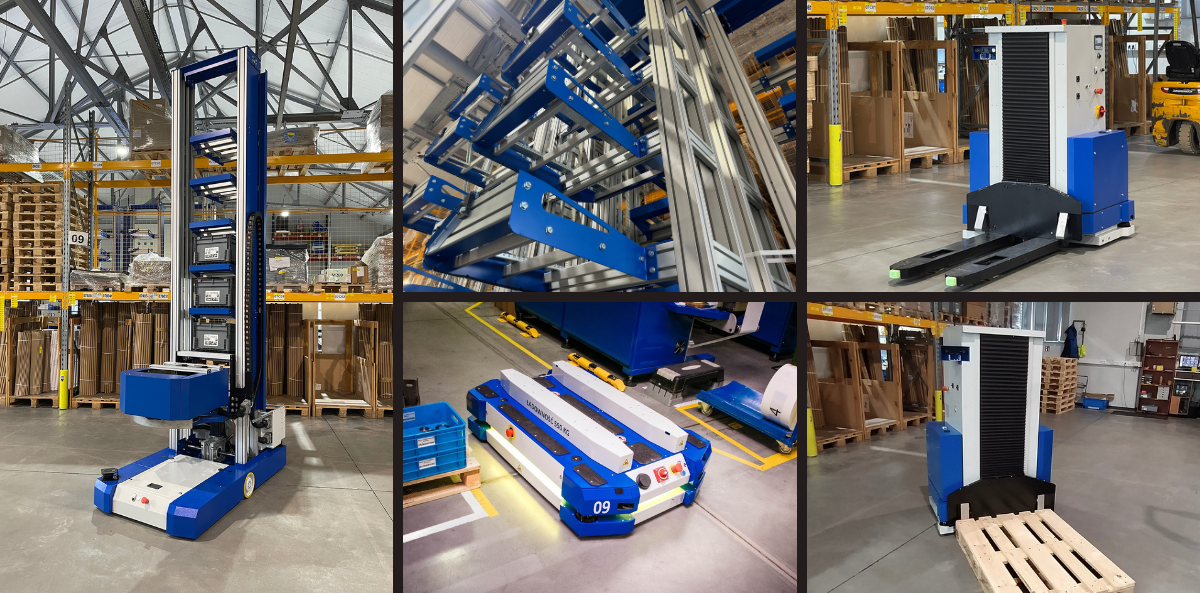
Autonomous mobile robots. Applications and types of AGVs and AMRs. Use pre-implementation analysis!
These days, with logistics becoming ever more advanced, autonomous mobile robots, such as AGVs (Autonomous Guided Vehicles) and AMRs (Autonomous Mobile Robots), are playing a central role in optimizing warehouse and transportation processes.
What solution does my company need? This question always comes up at the initial stage of considering the automation of logistics processes and intralogistics systems. The solution is to conduct a pre-implementation analysis with specialists in the field of intralogistics systems and mobile robotics.
In this article, we will examine different types of autonomous vehicles, depending on their applications. We will also analyze how companies can benefit from them.
1. Autonomous mobile robots – basic types of vehicles
The basic types of AGVs and AMRs, hereinafter referred to as robots or vehicles, can be divided according to their mechanical structure and how they interact with the load.
1.1 “Turtle” type robot
The first type of AGV and AMR is ‘the turtle,’ which is an autonomous vehicle that carries the load on its platform. Picking up and dropping off the load is usually carried out from suitable docks and conveyors. This type of autonomous vehicle is commonly equipped with various types of executive equipment, such as roller conveyors, manipulators, conveyors, platforms, or racks. This makes it a mobile transportation center. Such vehicles frequently feature good maneuverability, such as turning on the spot, due to the use of differential or multidirectional drive. This is an advantage when it comes to carrying loads with severely limited transport route widths.

1.2 Pallet robots
Pallet vehicles are specially designed to lift loads from a horizontal surface. They frequently replace traditional pallet trucks, making it possible to move around warehouse and production areas efficiently and autonomously. Such autonomous vehicles pick up and drop off the load onto the floor. They are also frequently capable of lifting it to a higher height handling also the ends of production lines, e.g., roller conveyors.

1.3 Forklift robots
Autonomous forklift robots provide a replacement for traditional forklift trucks. Equipped with a counterweight, they are capable of lifting loads from floor level to considerable heights. This increases the efficiency of warehouse processes. The structure of the fork makes it possible to pick up a significantly wider range of pallets, carts, and boxes. Such solutions can even feature an adjustable spacing of the fork. On the other hand, it is worth pointing out that the dimension caused by the necessary counterweight does not favor narrow transport routes.
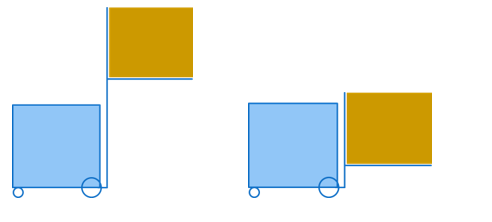
Automated or traditional warehouse – which to choose?
1.4 Towing robots
Towing AGVs and AMRs are autonomous vehicles adapted to pull several carts or cages on their wheels. They are perfect for handling larger volumes of goods between different areas of the plant and provide increased process efficiency and space optimization. When it comes to this type of transport, the challenge is how to automatically attach and detach the carts. The easiest way to do this is through an operator. Another idea is to attach the carts permanently and insert and remove only the loads.
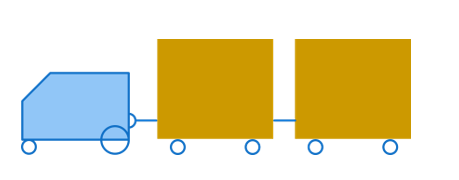
1.5 Attaching robots
Attaching vehicles resemble “turtle” type vehicles in design and feature the ability to attach or dock under the load, such as a cage on wheels, and tow it to a desired site. It is a perfect solution for handling larger loads in a limited space. The heavier cage rests on its wheels at all times.
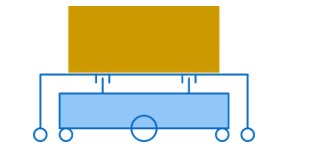
1.6 Warehouse sorting robots
Sorting vehicles are designed for warehouse operations, making it possible to pick up and drop off multiple loads onto racks or conveyors. They are essential for complex sorting and picking processes in large warehouses.
Apart from the basic types, there are a lot of custom designs developed for a specialized transport process, including transporting custom loads or transporting in demanding terrain or environments.
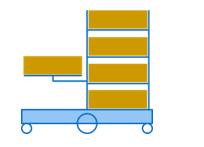
2. The IntraBot series: an example of innovative AMRs
The IntraBot brand presents an advanced series of transport robots that meet the various needs of companies. Here are some key types from the series.
2.1 IntraBot Flat and IntraBot Lift
IntraBot Flat is a versatile “turtle” type mobile robot capable of handling various tasks. Its flat platform allows it to carry various types of loads. This makes it an ideal solution for dynamic and variable logistics needs. Any work module can be mounted on its top, e.g., a rack, robotic arm, roller conveyor, etc.
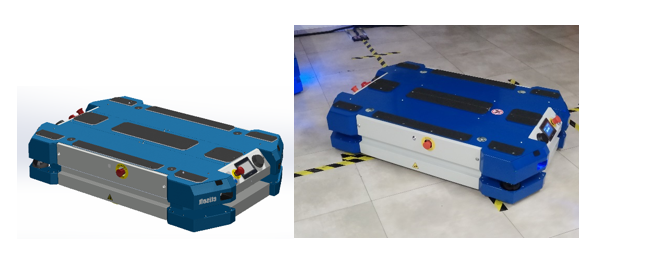
IntraBot Lift is an extension of this type of robot that is equipped with a lift. Rotation in place and compact size allow it to pass through narrow roads and turns.

2.3 IntraBot Fork
IntraBot Fork is the answer to the need to move pallets autonomously. This mobile robot features picking up and dropping off loads onto the floor and different types of conveyors or platforms.
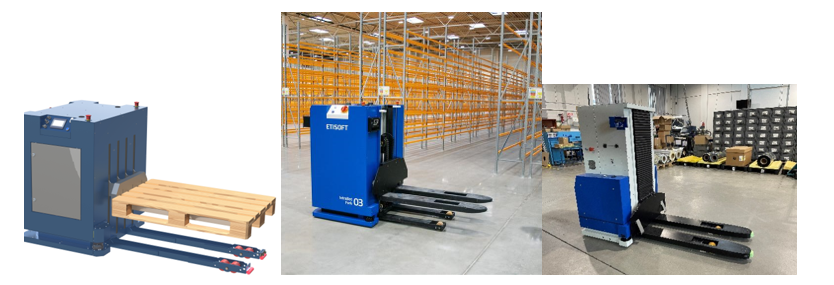
2.4 IntraBot Pull
IntraBot Pull is a towing robot capable of precisely pulling several carts or cages. Its towing capabilities make it possible to efficiently transport larger quantities of goods.
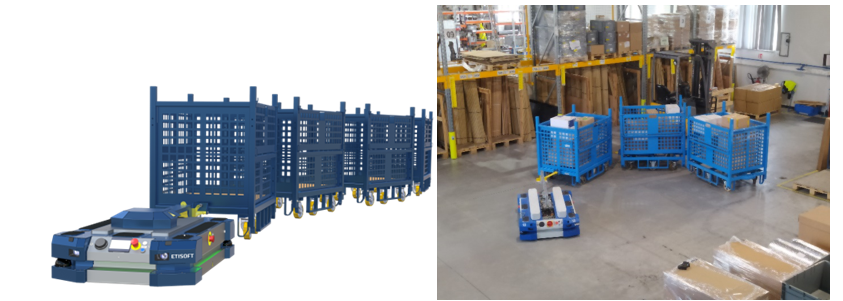
2.5 IntraBot Cart
IntraBot Cart is a mobile platform, perfect for transporting various loads. Using this type of robot significantly streamlines transportation processes. Therefore, after dropping the cage off, the operator can manually transport it (for example) to a further part of the production line.
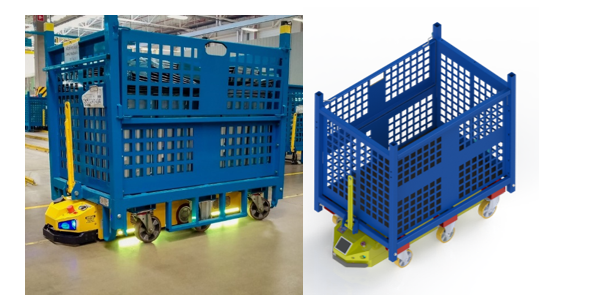
2.6 IntraBot Picker
IntraBot Picker is a specialist mobile robot capable of picking up and dropping off loads in KLT boxes onto racks in automated warehouses. Equipped with advanced sensors and algorithms, it can handle high racks and transport to picking stations.
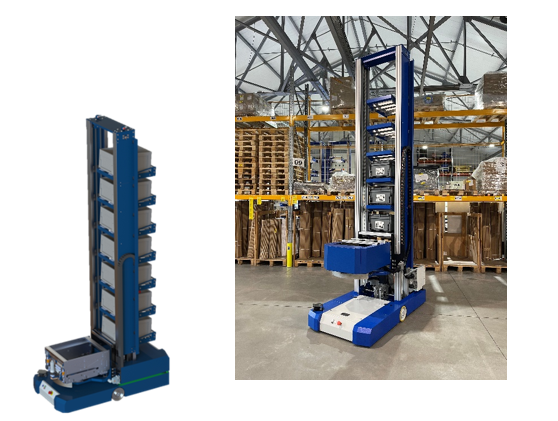
3. Pre-implementation analysis
Companies interested in implementing AGVs and AMRs should carry out a detailed pre-implementation analysis. The crucial thing is to adapt the selection of a particular type of vehicle to the specifics of the logistics processes at a given production plant.
AGVs/AMRs: pre-implementation analysis. Find out why!
Summary
Mobile robots like AGVs and AMRs constitute an undeniable step forward in logistics. Their diversity makes it possible to adapt them to various applications, from simple transports to complex warehouse operations. The IntraBot series is an example of an innovative answer to various corporate needs, which proves that the future of logistics belongs to autonomous mobile robots. Investing in these advanced technologies is not only a step toward efficiency, but also a response to the challenges of today’s logistics market.
